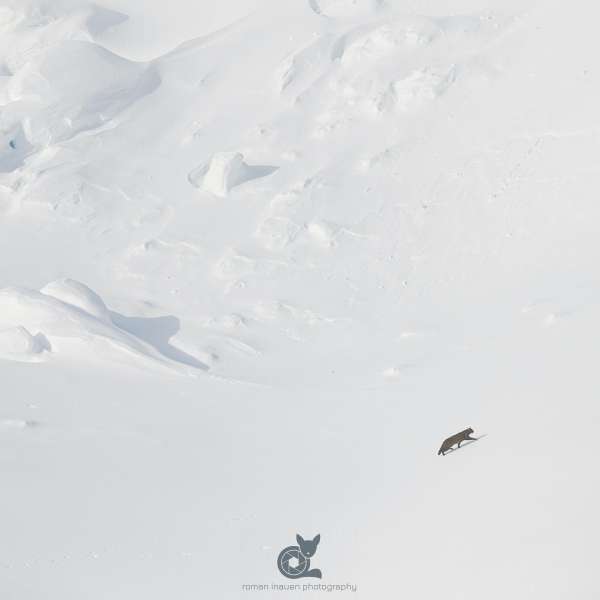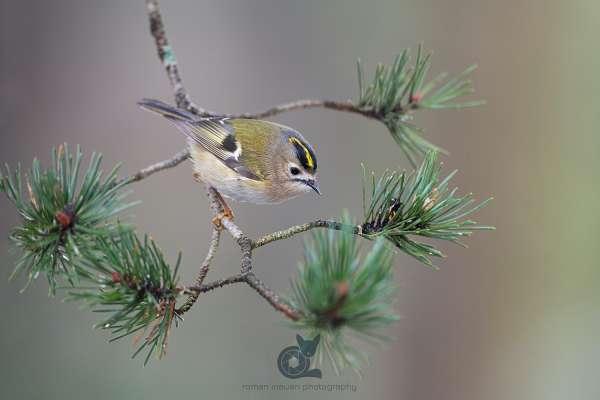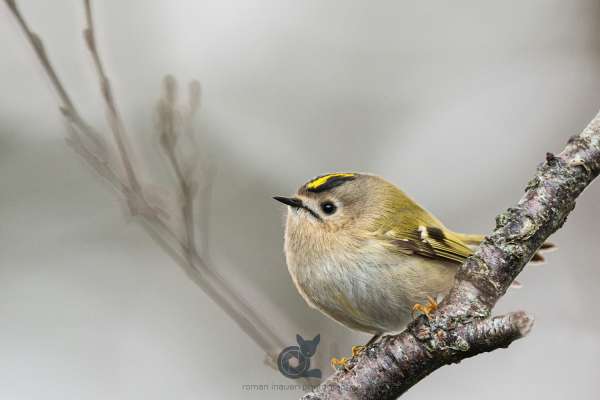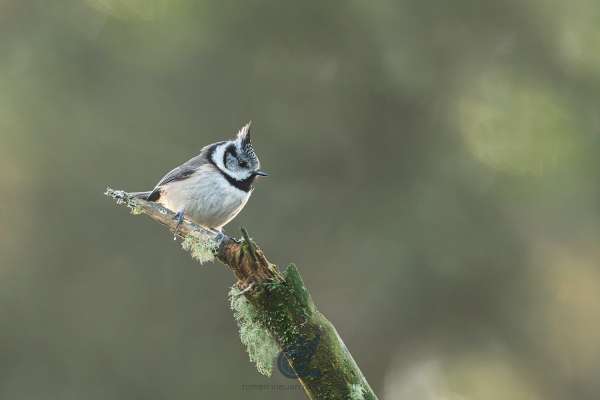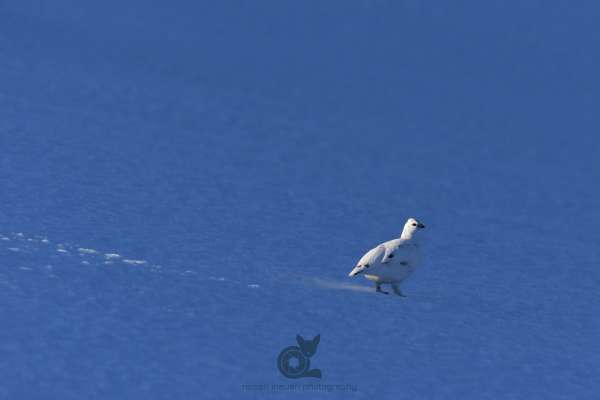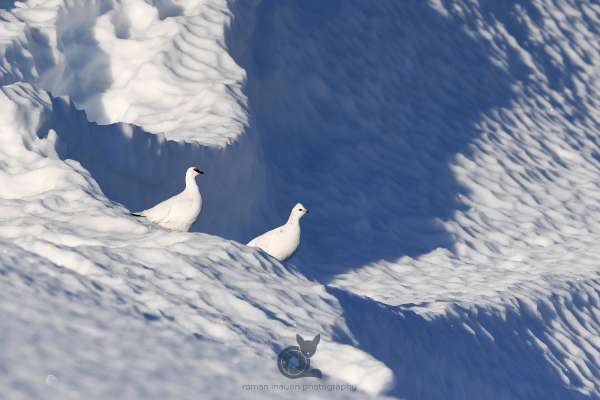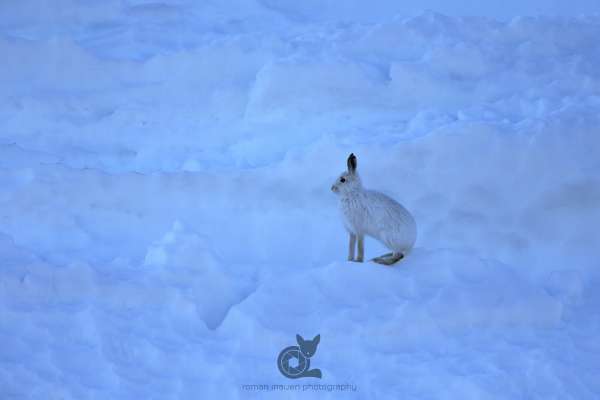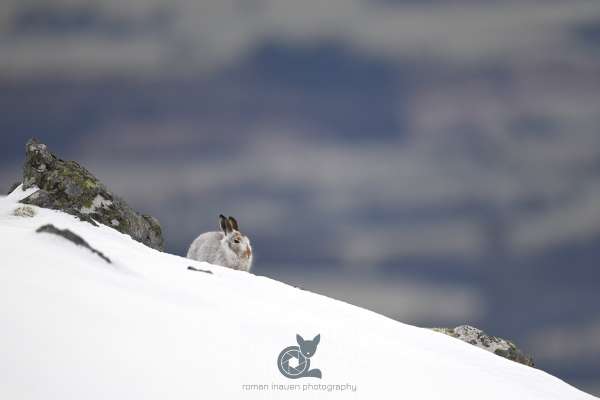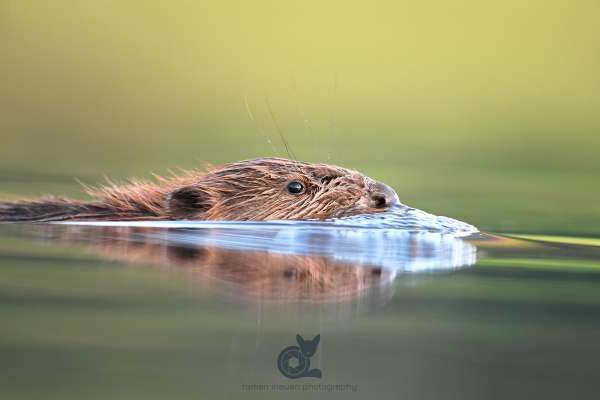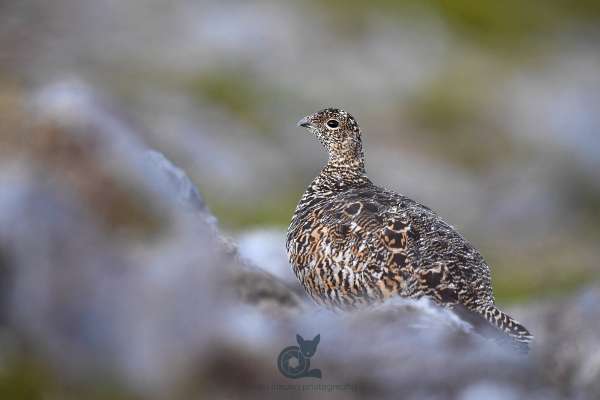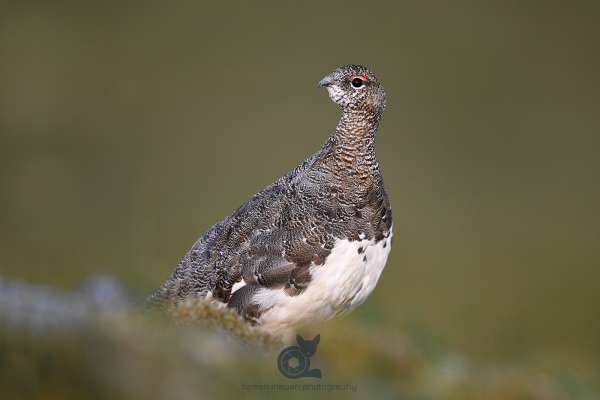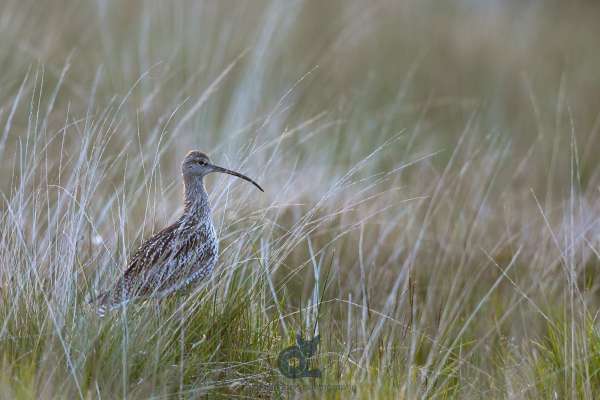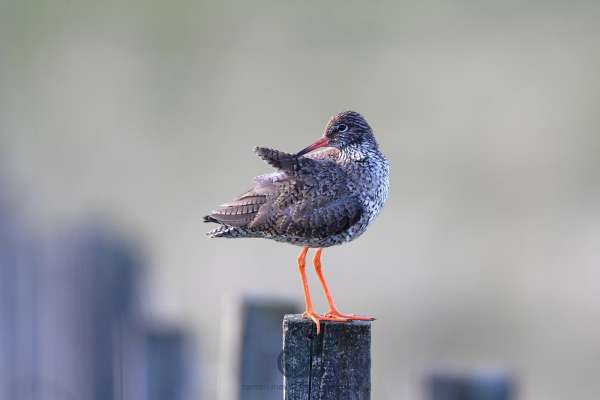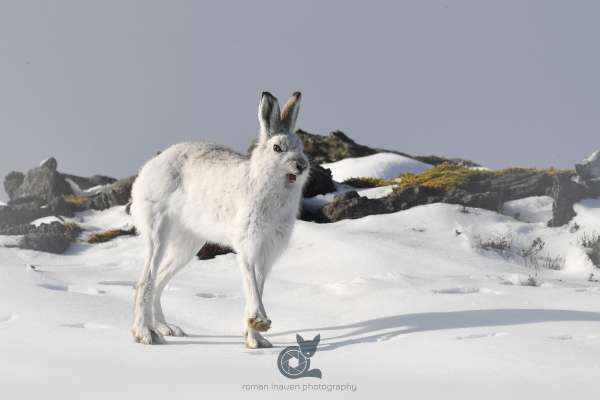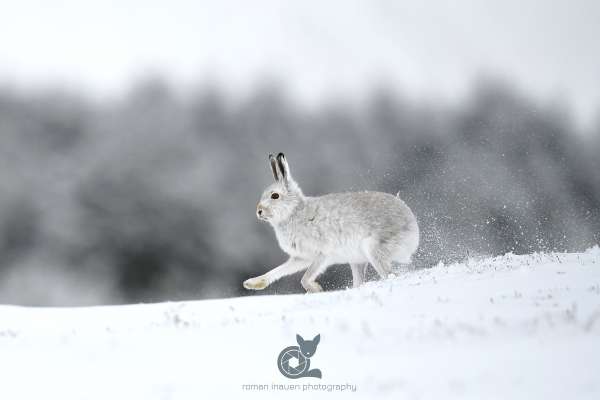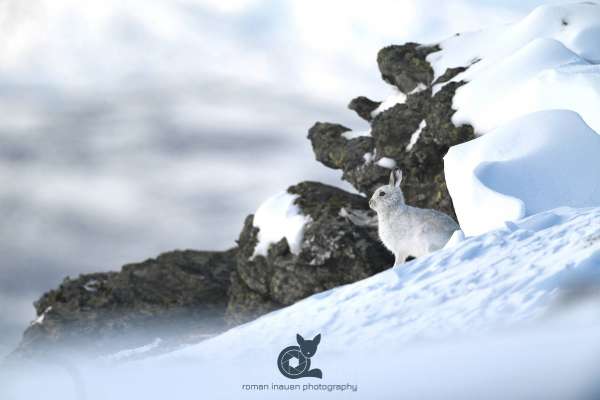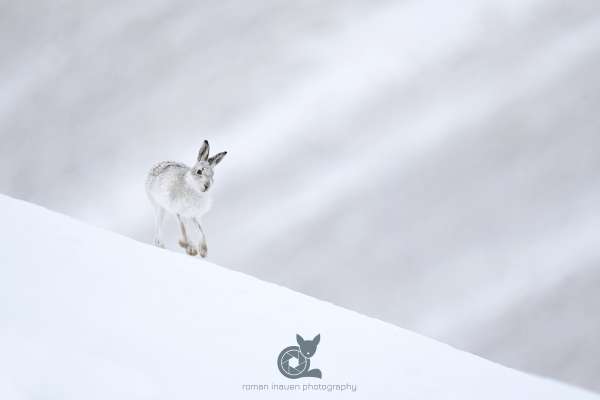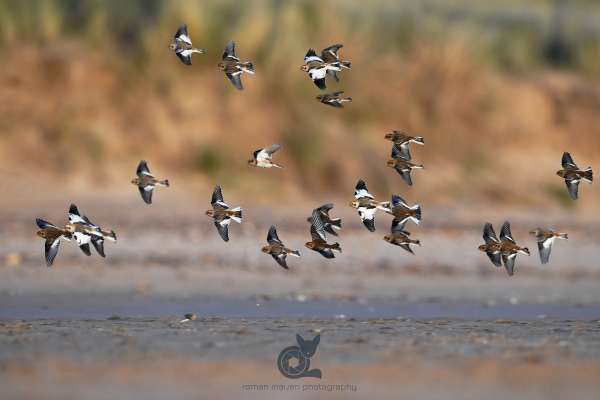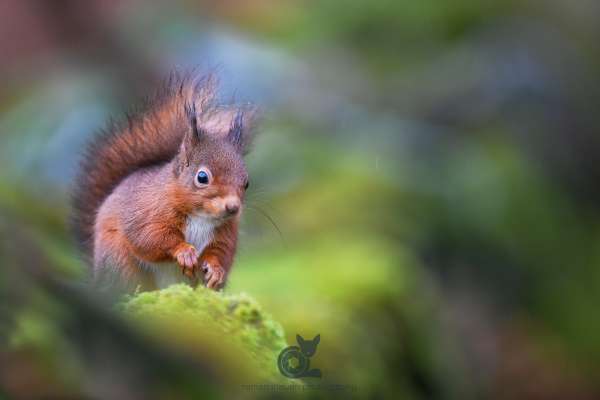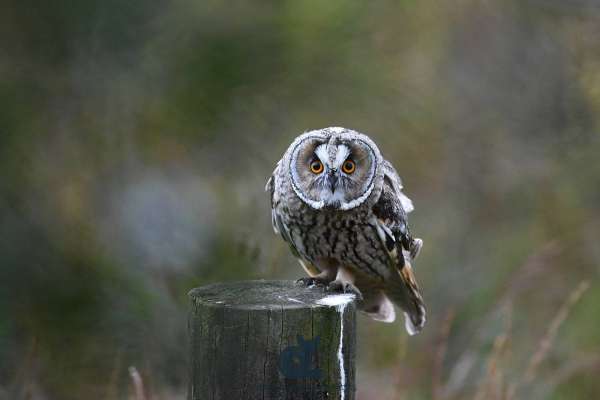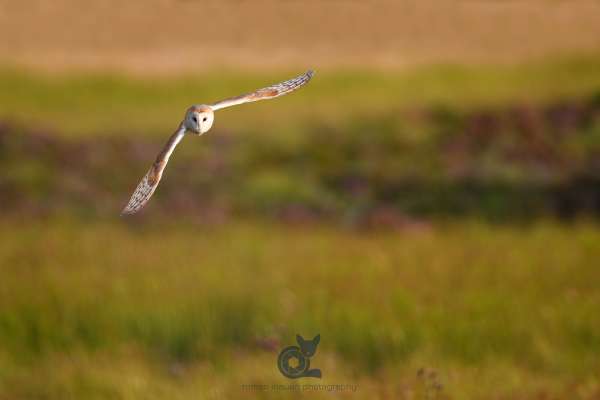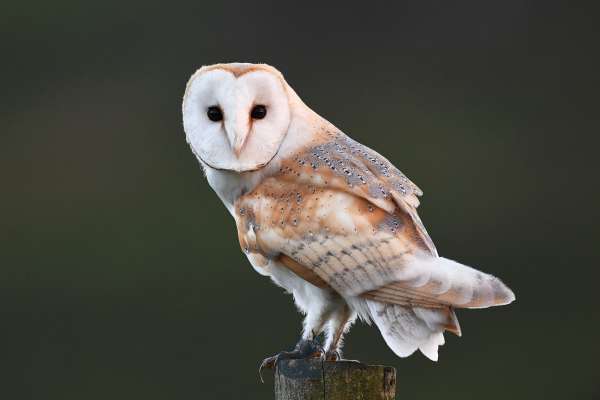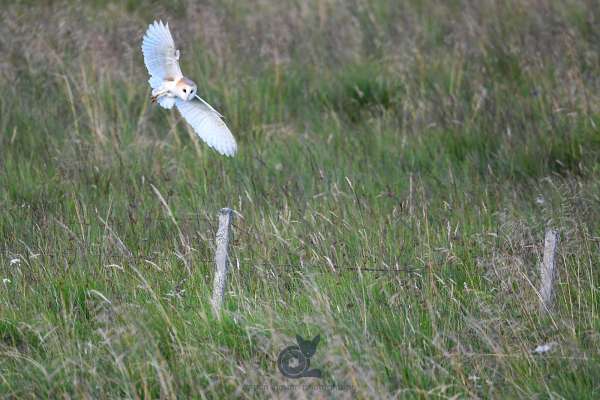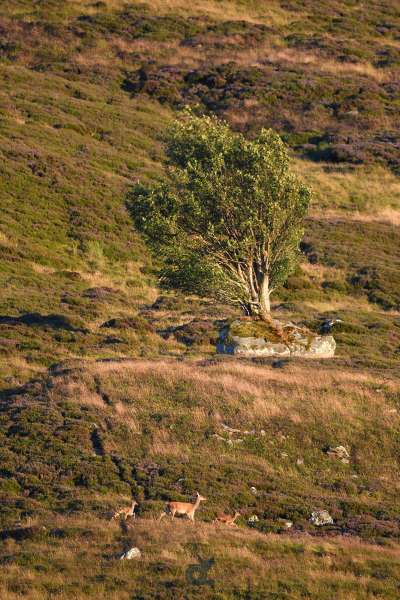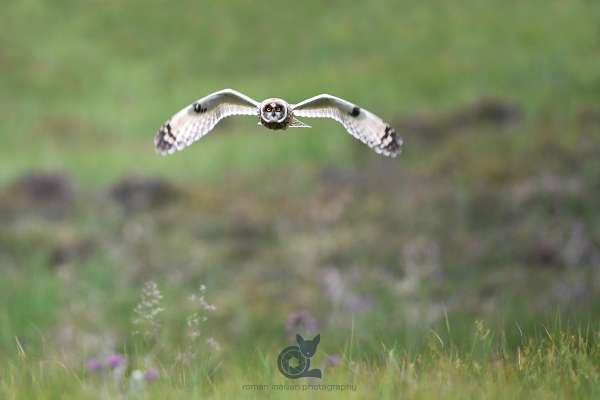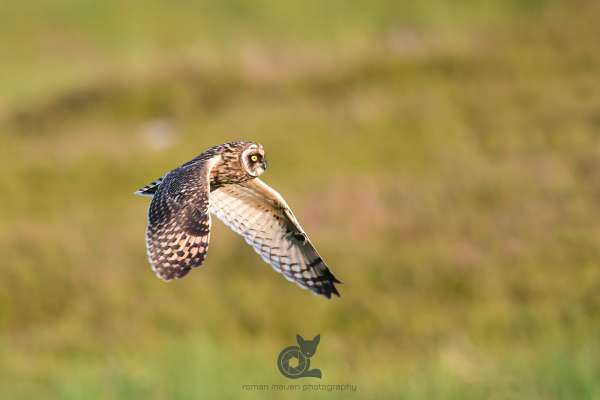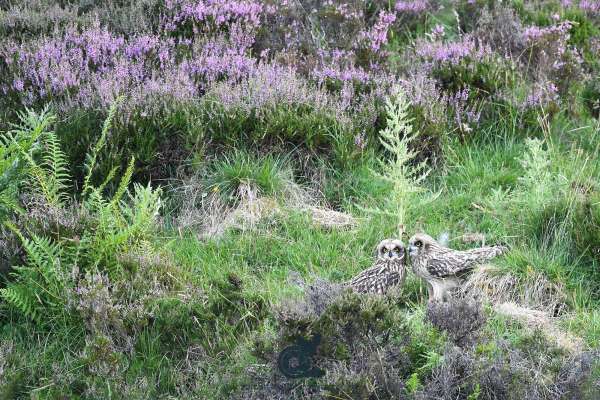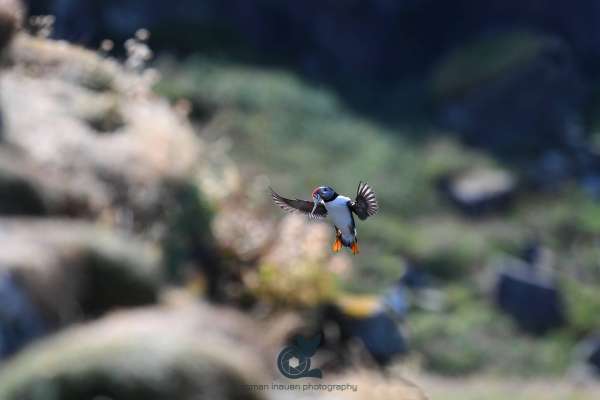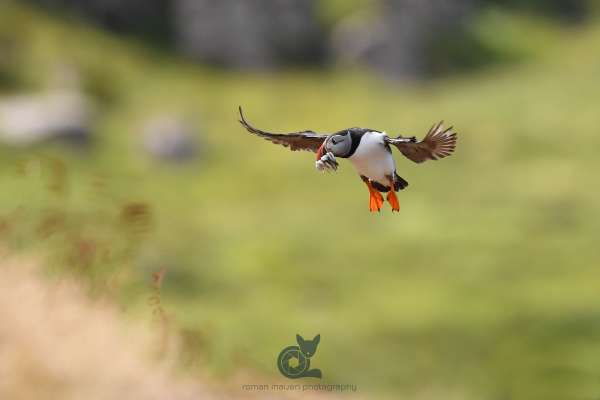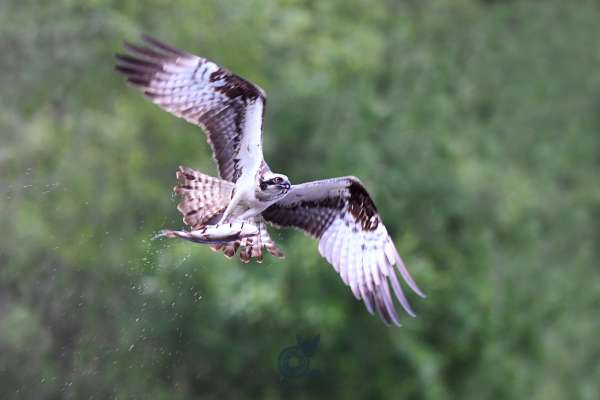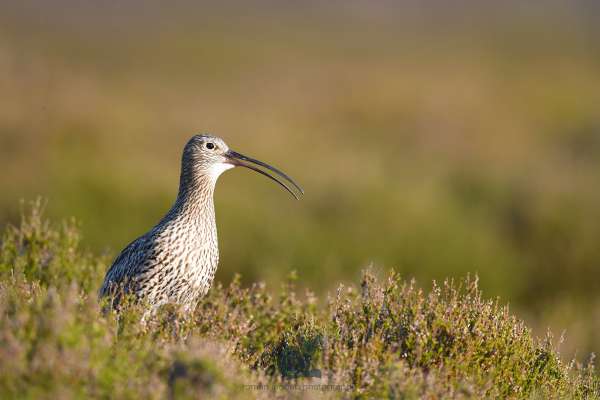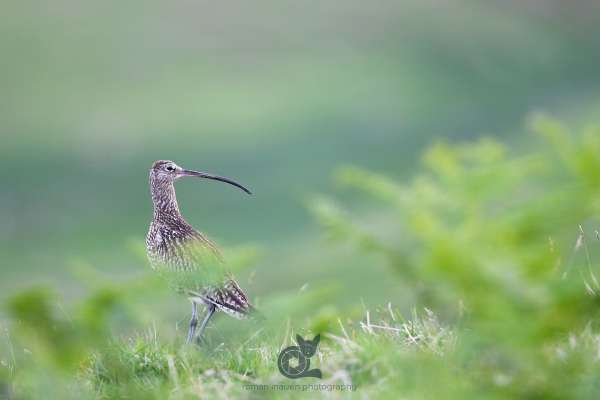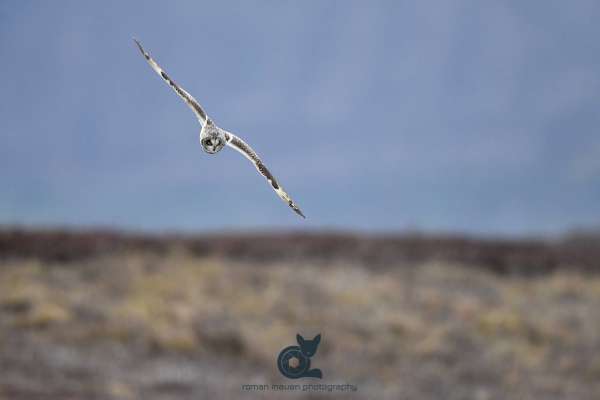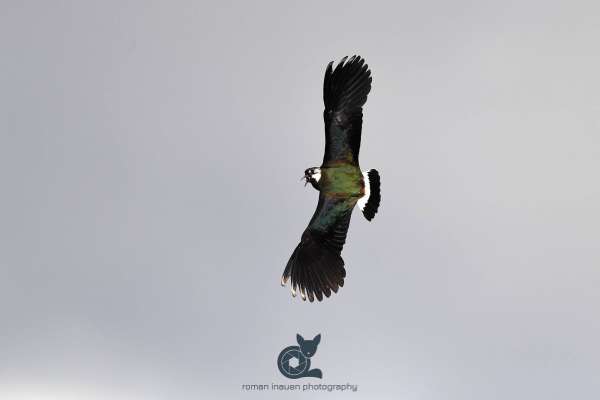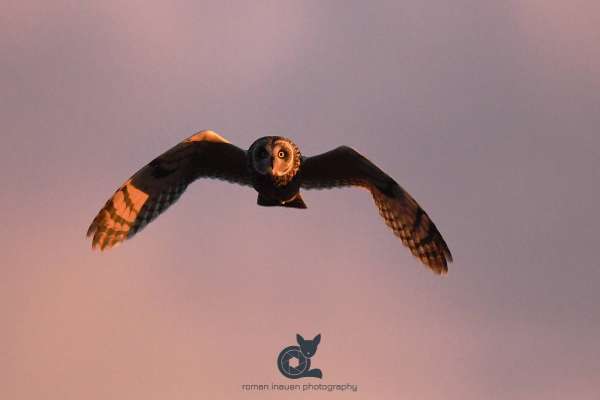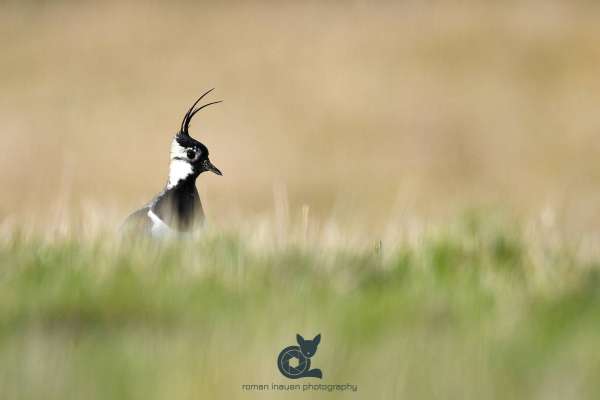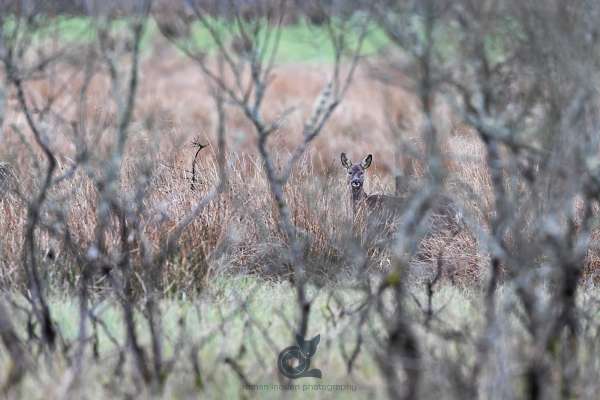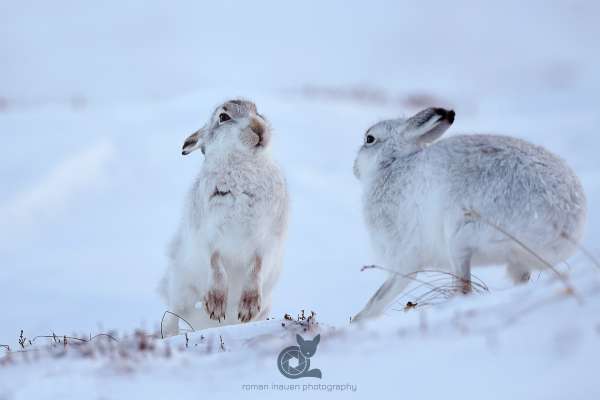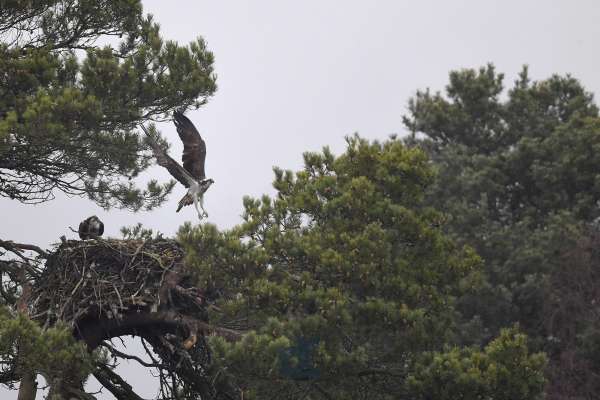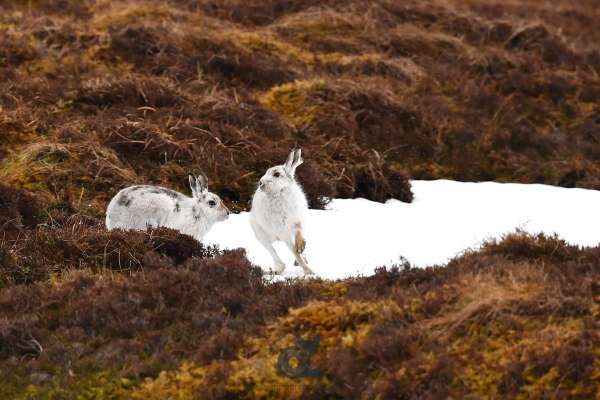Cairngorms Nationalpark
This page will be updated as often as possible, with my current projects. Additionally, facts about regional animal species and my newest photographs will be shown here!
Scottish wild cat
I could spend a very cold and windy, but anyway fantastic time photographing wildlife in the Cairngorms Nationalpark end of February begiining of March 2020. I was looking for new locations with beautiful landscapes and was mostly walking all day long around the Cairn Gorm Mountain and often into different parts in and around the Monadhliath Mountain range. It was at times very exhausting, especially when there was fresh snow but well worth the effort at the end...
This one speciall place and all the memories linked with it will always be something very special for me. After finding this place I have decided to go back again to take more pictures in this beautiful snow drift formed landscapes in the first light of the day and I had a fantastic time and one of my most exciting encounter with a very special animal!
I was sitting there in this beautiful snowy landscape far away from everything just looking at this Mountain Hare far away on the opposite slope sitting in it's snow-burrow. Suddenly a grey hare was running in to the scene, till this moment I had no idea it was there! Then the white hare was jumping out of his burrow, running away, looking back and was very nervous about something. I couldn’t see anything and was scanning the sky, but there was no golden eagle around. A couple of days ago I could watch a golden eagle hunting hares and was chasing them directly in my direction, but there was no bird around. Then the two hares were running away, steep uphill and without stopping once and don't looking back again, something they would usually do. I was wondering what could be the reason for this strange behavior, but I couldn’t see any predator at this time. Then a couple of minutes later I could see something black crossing the snow field. My first impression was that must be a fox searching for prey, but it was not red like a fox it was too dark. It took me a while till I realised it was not a fox, but a cat. My impression was this must be wild cat, it was much biger than a domestic cat, far away from civilisation and when I saw the marking in the croped picture I was almost sure this was one of this few wild cats out there. As suddenly as it showed up, as fast it disappeared again. Only because there was snow I was able to see the cat, otherwise I would never ever have seen it. After showing this images to wildcat experts, they could confirm this was definitely a wild cat, but if it was genetic pure one is a diffrent question...anyway how exciting to still have this magnificent animal out there!
27.03.2020
Crested tits and other birds in the Cairngorm Nationalpark
After spending most of the time walking up the hills and just sitting there and waiting till the without is over, I had to do something diffrent for a couple of days. In blizzard conditions, snow already on the ground can become windblown, reducing visibility to near zero. Usually I really like cold and windy weather with lots of snowdrift and snowbound hares to photograph, but this time it was just a little too much. Finally I had the chance to photograph the Crested tit down there in the sheltered woods around Loch Mallachie, Loch Garten and Abernethy Forest. Every time when I was in the Cairngorms I wanted to spend some time with them, but at the end I was up on the hills with the Hares or Ptarmigans all the time. This was the chance now. This are beautiful little birds and I was lucky to have a Gold crest and a Woodpecker around too!
26.03.2020
Ptarmigan on ice for hogmanay
There was almost no more snow left on top of the munros, but the weather forcast was brilliant for hogmanay 2019. I was heading up a munro and didn`t expect to do a lot of photography up there anyway. I had just a small lens with me and a converter, so more prepaired for walking than for taking time to do some serious wildlife-photography. When I was finally up on top, there was a huge ice fild made from a snow drift, it looked fantastic. I was sitting down and was thinking how wunderful it would be to have a couple of Ptarmigans or a Mountain hare sitting there. I could find about four holes in the ice, still there from when the snow was fresh and the Mountain Hares could dig their holes, but no Hare inside. While I was enjoing the sunn and was eating my sandwich, suddenly something was moving slowly towards me. After a closer look and a couple seconds later I finally reralissed there was a pair of Ptarmigans on the ice field. What a nice background for a picture. I could sit there and watch them for a good hour and a half and then unfortunately a dog was chasing them away. Later I saw the same dog chasing a Mountain Hare. I think people should care more about our wildlife, when they go and visit such beautiful wild places, otherwise they should go to the park with their dogs. I was pleased with the result and more than happy to have found a couple of Ptarmigans in the middle of the only snow field left in the whole area. Most probably they feel save there, because they blend in so well. Later on a Mountain Hare was running down the hill, directly in front of me, chased away by a group of hillwalker. I wish I had my biger lens with me that day, but then maybe I wouldn`t have seen them at all...?
01.01.2020
Autumn was great but winter is already here..
Unfortunately I was very busy this autumn, there was not much time left to take my camera and go out. We had a couple of brilliant days with amazing light and beautiful colors. Sometimes you have to enjoy this moments without your camera. Later on beginning of November, there was snow on the hills and we had a couple of very cold but sunny and dry days. I couldn`t resist to climb up the hills and was looking for Mountain hares and Ptarmigans. I like to photograph the Mountain hares especially, when they just starting to morph into the winter pelage.
25.11.2019
Scottish Beavers in the River Lochay and Loch Tay
I could spend some magical days out with my floating hide on the water in and around Loch Tay. The floating hide gives me the chance to move without making any noise and well hiden for the animals. I was very close to a fishing Osprey and the other day an Otter was swimming directly in front of my hide. The angle is just a little above the water surface, which gives a great low-level picture. The local Beaver population is doing very well and it looks like they move up the rivers. Spending time with the Beaver family without disturbing them is just fantastic. The only thing is to check the wind direction, they have a very good sense of smell! I could find inhabited burrows along the river Lochay, as well as along the river Dochart. After observing them for a couple of weeks, I could tell exactly what time they will leave their lodge next day and in which direction they will swim afterwards. Most of the time I could see them (and more often just hear them) feeding on willow bushes in and close to the water. Usually they just cut out some branches and eat them or sometimes bring them to the lodge, they don`t cut down the whole tree. At least this is what happens at the moment, I will see if this behavior will change over the time of the year when they maybe can`t finde enough food from willow anymore? Most of the big trees along the rivers were fallen by Beavers during wintere time.
On 24 November 2016, the Scottish Government made the landmark announcement that beavers are to remain in Scotland. This is the first time that a mammal has been formally reintroduced in UK history. Over-hunting of the beaver, particularly for its valuable pelt, appears to have been the main cause of its extinction. The Eurasian or European beaver (Castor fiber) inhabit riparian broadleaved woodland next to standing freshwaters or slow moving streams. Totally herbivorous, beavers will feed on herbaceous and woody broadleaved species, especially wilow, cottonwood,birch maple and alder, sometimes they feed on water lilies, sedges and pondweeds as well. These monogamous animals live in family groups and favour burrows in banks as nesting places. Beavers do not hibernate, but store sticks and logs in a pile in their ponds, eating the underbark. Sometimes they dam streams to maintain water levels when their habitat does not provide all the conditions suitable for a beaver's needs. While beavers present challenges for some aspects of land use, restoration of this ‘ecosystem engineer’ will benefit a wide range of species and habitats. In woodland environments, beavers help to stimulate new growth by gnawing on tree stems and coppicing. This helps to breathe new life into tired forests and creates a diverse age range of trees which greatly benefits woodland management.
17.08.2019
How to photograph Ptarmigans on your local Munro?
Summer is a great time in Scotland for Munro bagging. Usually I go back to the same area again and again, that`s why my bag is not full yet... summer is a great time for wildlife photography up on the hills as well, because days are long and the temperature is comfortable this time of the year, which allows to stay up there for a long periode of time. Because I wanted to see something new, I was climbing up the local Munros I haven`t done yet. It was well woth the effort, I found some great places and good areas for wildlife photography. I love photographing Ptarmigans on the Munros, not one of the easiest subjects, but lots of adventure for sure. First you have to climb your way up packed with your heavy equipment, you will see other wildlife on your way up, so you have to stop often to take a picture or at least to try to take one... and then you have to find them... which can take a while! In summer during warm days, they will hide in the shady hillside during the warm afternoon and will come further up in the evening. So you have to wait for them and for the good light as well. When you have finally found them, you have to be very careful not to spook them. Usually it`s best to approach them from a lower level and sit or lay down to the ground for a while and let them alone. Don`t try to approach them quickly, it doesn`t work, especially not during the summer, they will fly away! They need time to become accustomed to you. If they finally have accepted you as part of their environment, the fun part starts, you can start finding the best position for a nice picture!
It is sometimes hard work to find and photograph Ptarmigans, but me personally I like to work hard for a nice wildlife picture. No one will have the same picture as you, it`s unique, as unique as your adventure was up there together with this marvelous birds!
If you are interessted to join me on a wildlife tour up to the Ptarmigans, please send me an e-mail for more information.
25.07.2019
Mountain Hare and Ptarmigan Tours
Finally I had some time to go through my pictures from last winter. It was a mild winter with not much snow on the hills most of the time, but with several really nice tours, some of them with clients. It is always exciting again to climbe up to the highest tops and find the white Mountain Hares and further up the sturdy Ptarmigans. It was not always white up there this year, but we had a good time anyway. We could find plenty of Ptarmigans on every single trip and mostly we spend our time with up to 10 Ptarmigans. They were feeding, grooming and displaing just a couple of meters in front of us, often too close for the long lens! Thanks to all customers who made a trip with me up there, even when the weather was not brilliant sometimes.
If you are interested to do a trip to the Mountain Hares and Ptarmigans next winter, let me know. Possible species are Ptarmigan, Mountain Hare, Red Grouse, Red Deer, Red Squirrel, Short-eared Owl. Later on in the year we will also have the chance to see Barn Owl, Black Grouse, Curlew, Lapwing, Dipper and plenty other species.
15.03.2019
Shore Lark
The elusive Shore Lark or Horned Lark (because the males have small "horns" on their head), it is a really speciall and beautiful bird and a rare winter guest here in the UK. Usually they live in the mountains of Scandinavian. At Holkham Beach in Norfolk you have a good chance to see them during winter time. But you need to be patient especially when your plan is to take pictures of this beautiful bird. They are not only shy, they are very well hidden und you need to scan the salt marshes very well and very carefully. From time to time you can see them flying away, but usually they will come back to the same place later on. They feed on smal seeds and hide very well between the sparse vegetation.
09.02.2019
How to take photographs of a flock of birds
I love to watch the movement of a flock of birds. When I was down south at the Norfolk Coast, I had the chance to watch a nice flock of Snow Buntings. It was a great opportunity to photograph them, because they came back to the same place again and again, so all I had to do was sitting there and wait for them to come. It is not easy to take a nice picture, the problem is you need to work with a long lens (to come close to the birds) and you need a fast shutter speed (to freeze the movment of the birds in flight) so the main problem is to get enough dept of the field. Usually if they don`t fly together, or in the same level, most of the birds are out of focus (or just the one bird in focus is sharp, the rest isn`t..) But if they come back again and again, the chance is they will fly together at the same level (means most of them are hopefully in focus!) Try it and you will see it is not easy, but the more you try, the more you will learn about it. It is very exciting and full of action, try it und you will see, it`s fun!
30.01.2019
Norfolk Barn Owl
On our way from Switzerland back to Scotland, we had a couple of days at the coast of Norfolk. It was a great experience, I have seen many birds I have never ever seen before in the UK (like Shore Lark and Avocet floks, Bittern and different kind of Goos). My wish was to see the beautiful Barn Owls, because this is one of the top locations for them in the UK and it is true there are plenty around! I found them just the day after the day we arrived! It is not easy to photograph them during daylight, but when you get up early, before dawn, you will have a good chance to see them. Especially after a windy and wet night you have a good chance to see plenty of them hunting during daylight. Usually they are nocturnal, but in windy conditions they do not hunt. The chance to see Barn Owls is much better at the Norfolk Coast than in the Scottish Highlands, the climate is much milder down there, just perfect for Barn Owls and there is plenty of rough grasslands and fields around. One morning I could watch four Owls hunting together in a field at Holkham nature reserve. If possible stay in your car or sit down along the road behind bushes, otherwise they can see you and they will maybe fly away. They are usually not very shy, but don`t go to close to the Owls, let them come to you! Often they fly in to the same corridors again and again, so be patient and wait for them to come to you. They definitely will soon or later..
28.01.2019
Red Squirrels in the rain
Sometimes a long period of rainy weather, especially in winter time, can be frustrating for Photographers. No beautiful light early in the morning, and wildlife seems to be missing to. But sometimes it is worth to go outdoors anyway and try to do something different! A bright and cloudy day can give you at times some really nice and soft light, much better than direkt, strong sunlight which gives you very dark shadows. I prefer light cloudy days, but the best would be a cloud free sunrise and sunset every day and light clouds (not too much!) during the day! No wait, there will be hopefully snow fall soon.., I take everything back, I primarily prefer snow fall and light clouds;-)
08.12.2018
The Weasel
What a smart and elusive animal, I have seen them quite often, but mostly not more than a glimpse of one. They are much smaller than a Stoat but unbelievable strong. The differences between stoats and weasels aren’t huge, but when you know what to look out for, it’s not too hard to know whether you’re watching a stoat or a weasel. Stoats have a longer tail with a black tip all year round, this is the key distinguishing feature. If it’s got any white on its back, it’s a stoat, as weasels don’t turn white in winter in the UK. I found this Weasel on top of a Munro in the snow! I was sitting there and was ready with my camera (not because of the Weasel, I was photographing Mountain Hares!) and then it suddenly showed up with a captured Short-tailed vole. The Weasel was climbing effortless and very skilled over big stones and was finally disappeared in a hole. There was not much time to take a picture, but at least I could take one frame of this smallest carnivore in the UK.
07.12.2018
Mountain Hares and Ptarmigans
Mountain Hares and Ptarmigans on top of the hills. Finally there is a little snow on top of the Munros, time to climb up and watch the Mountain Hares and Ptarmigans. Some of the Ptarmigans turned completely white already and some of the Haires too! Not each Hare will change to a white coat during winter, some will stay blue-grey or light brown. It is always a pleasure again to looking for them and spend some time in their company! The best way to do so, is just sit there and don`t move, then try to approach very slowly and careful or much better let them come to you!
06.12.2018
Autumn is gone...
Autumn is a beautiful time, maybe one of my favorite. I love to go out in to the forest and have a look at the busy squirrels and watch the birds picking up berry. The only thing I don`t like is the beautiful colors don`t last long enough..... already looking forward...
20.11.2018
Long-eared owl
Long-eared owls are usually found close to wooded parts of moorland and rough grassland and other areas with high populations of field voles and other small mammals. I often see them hunting together with Barn owls in the same habitat. In flight they look very similar to Short-eared owls, but the flight pattern is very different. The Long-eared owl in the picture probably didn't realised I was there (I was in a hide and very well camouflaged), usually they raise their ear tufts when alarmed, though this tufts are not ears really.
The long-eared owl is a very secretive species as a result of their secretive nature, it is difficult to be sure whether the lack of observations in some areas gives a true indication of its numbers and its range.
I was looking for the Short-eared owls for a long time now and finally found a place where they regularly hunt in the eraly morning und late evening time. After spending many hours, days and weeks in the field to find them, I can say this was so far the most difficult species I have ever worked with. It is difficult to find them, difficult to see them in the field when they rest. The other problem is they are shy, you have to wait form them. Finally it is very difficult to photograph them due to the lack of light during the time they are usually active. Best time to see them during day time, is late in the summer. Hope to see them again one day and have the chance to learn more about them...
02.11.2018
Barn owl close encounter
I was very lucky with owls when out in the field again. I was looking for the Short-eared owls this evening and finally could see them hunting, but also found a Barn owl. It was possible to take pictures from very close without disturbing this beautiful bird, he was then hunting for over an hour just a few meters in front of me and was absolutelly not shy. What a fantastic encounter with this bird!
24.08.2018
Barn Owls in Perthshire!
Finally I found a good place to see the Barn Owls during daylight up here in Perthshire. It seems like the population of Barn Owls is surprisingly strong up here this summer, although the harsh conditions during wintertime. Maybe the population was just increasing because of the dry and warm spring and summer, or it was just a good vole year? Hopefully I will see them again later on..?
05.08.2018
Heather in full bloom
The heather in Scotland is now almost in full bloom and the upland moors start to change their colour dramatically. A beautiful place to be, specially in the evening when the light is soft and warm. I have seen lots of birds and beautiful places, rough landscapes in beautiful light. That evening I was thinking to start again with landscape photography, well maybe one day....
31.07.2018
The Short-eared owl in flight
I was very lucky again with the owls a couple of days ago. The light was low, but still enough and the most important thing, the owl was finally turning up! I was sitting and waiting for over an hour in a small hide at a place I have seen them regularly hunting over rough ground (doesn't mean they will show up there again...) This time I was lucky and very pleased with the result, the owl was hunting and was flying directly in my direction ;-)
29.07.2018
Jung Short-eared owls
This spring and summer I could spend an extensive time with my absolutely favorit animals, the Short-eared owls. It was the first time ever I could observe the owls during their breeding season, from starting building their nest till the time the jung owls fledged, learning to fly and finally started hunting themselfes. And all this happend not far from my home. Sometimes I could see them hunting in the middle of the day, what a great spectacle. I enjoyed every minute I could spend with this beautiful animals and I hope the chicks will survive and maybe come back one day for breeding up here again in the moorlands of Breadalbane. I feel so privileged to live in such a beautiful part of scotland and so close to this stunning countryside and its inhabitant.
25.07.2018
Otters on the Isle of Mull
It is always a new challenge and adventure again to find this beautiful but very shy and elusive animal. During our one week tour on mull, we could see them several times at different places, but taking a pictures without disturbing them is a completely different story. Especially during the busy summertime on the island, the otters try to avoid the busy places, where you could see them regularly during wintertime. Best time was definitely very early morning after and before low tide. If you want to join me next summer to learn more about this beautiful animals and how to photograph them without disturbing them send me an Email.
22.07.2018
Puffin on Lunga
On thing I really like to do in summer on the island of Mull is to see and photograph the amazing Puffins! On our photography-trip we where able to see them on Lunga, a small island not far from Staffa island. It is always great to enjoy their company and try to make a couple of pictures when they come in with fish. Love this animals and will definitely go back next summer!
15.07.2018
Osprey photography
Finally I could manage to go to Aviemore to photograph the beautiful Osprey. After an amazing week on the island of Mull (pictures from this trip will follow), I had the chance to photograph the famous Osprey EJ in the hide in Aviemore, Cairngorms Nationalpark. The weather was unfortunately not great this morning, but you have to try your best anyway, that's Wildlife-photography! I was able to get a nice picture from an Osprey just taking off with the trout and flying in my direction (the bird just filled the frame!), the wide open lens gives a nice blurry background, the head of the bird is in focus and you can see the rain drops falling down from the sky. I will be back one day...
If you are interested in joining me on a photography- trip to the Cairngorms in winter (or summer for the Ospre), let me know and I can send you the details!
14.07.2018
Curlew
The curlew is the largest European wading bird, his length is up to 60cm and his wingspan can reach up to 100cm and he can weigh up to 1 kg! Curlews are not easy to find and usually they are very shy and elusive. So far it was always very hard to come close by. I was very lucky to spend an extended period of time to find, observe and photograph this amazing bird on an upland moor in Perthshire.
The problem for curlews is that it is more and more difficult to find nesting sites because of the increasing number of fields and agriculture taking over the wetlands. The UK`s breeding population is of international importance, being estimated to represent more than 30% of the west European population. their IUCN status is near threatened. The species is a UK BAP priority, and is Amber listed due to the international importance of both breeding and wintering populations in the UK.
11.06.2018
Short-eared owls in Perthshire
It was a beautiful day in May, I was lucky again with the beautiful Short-eared owls in Perthshire. I could see them hunting already in the late afternoon over heathland, a place I haven`t seen them ever before! Great to see they do well in Perthshire. It is a treat to watch them slowly gliding over the heather and grass looking for mice. I could use my car as a hide, so the owl was not scared and one owl was hunting for over an hour just in front of my car! What a great day, altogether I could see 5 different Short-eared owls that day! The best time is definitely early morning and late afternoon to see this gorgeous owls.
20.05.2018
Spring in Perthshire
Finally spring in Perthshire! A couple of days ago on a tour with a client, we have seen plenty of Black Grouse, Lapwings, Curlews, Snipes and a Short-eared owl. Great to see the Black Grouse do well in Perthshire.
14.05.2018
Short Eared Owl
Short-eared owls are my absolutely favorite birds of prey. They get their name "Short-eared" from the feather tufts that can be lifted on the top of their heads, usually this is a sign of alarm or defence. They are commonly seen hunting in the first or the last light of the day, sometimes during the day. In winter, there is an influx of continental birds from Scandinavia. Here in Perthshire I can see them in good numbers specially during wintertime. They are of European conservation concern and so are an Amber List species. An estimate of the Scottish population suggested 780 - 2,700 breeding pairs. This owl was hunting in an area of mixed rough grasslands and heather moors in Perthshire. Their prey is small rodents, such as mice and voles, but they take small birds as well. The picture was taken in the late afternoon from a hide.
07.05.2018
Black Grouse in Perthshire
Black Grouse feeding on larch buds, Perthshire. I found a very good new location to see this beautiful birds very close to the road. I could use my car as a hide
06.05.2018
Lapwing
Finally spring in the glens of Perthshire. I could see Black Grouse, plenty of Lapwings, Curlew and a Short Eared Owl.
04.05.2018
Roe deer are back!
Today I saw two young roe deer close to Loch Tay, most probably the twins I have seen here last summer! Great to see they have both survived the hard wintertime.
18.04.2018
Mountain Hares close-by!
One of my favourite animal here in Scotland is definitely the Mountain Hare. Just a few days ago, I found a new location with a couple of hares very close to Killin. What a surprise to have this beautiful animals so close-by. Mountain hares are one of Scotland’s most iconic upland animals but we know relatively little about their conservation status. They live in upland areas and are most common on heathland, but I couldn't find a strong population close-by so far. They are at their most visible in spring, when the snow has melted but the hares are still white. Photographing this wonderful animals is always a great pleasure!
17.04.2018
Frühlings Foto Tour, letzte Tage
Being a bit behind with my updates of the photography tours I provided and finished last week Saturday. Every photographer, amateur or professional, will face the same time-consuming efforts after a fun time out with the camera: going through the many pictures you just shot. Which one to keep and which one to delete... Hard decisions being followed by even harder times when it comes to picture editing. How much you want to edit is a very personal preference (I, for example, do try to keep it as little as possible). After a long week of being outside it can be much more joyful and helpful to take some time as a group and go through the pics of every participant, getting different views and opinions. We had a fun time doing so with part of the group (as another part sadly fell ill) and I think the clients went home happy and proud with some very nice shots (and tired legs)
These are some of my shots from the last two days, one being very rainy and therefore, after some birdwatching at Loch Tay we sought for shelter in the afternoon at the Loch of the Lowes wildlife reserve to watch the osprey (nesting & mating).
We were unlucky with the short-eared owls but found some red grouse and mountain hares.
Saturday, the last day, was the most challenging day, fitness- and wildlife wise. After watching blackgrouse display themselves at a lek-site we climbed up a munro to (successfully) find the elusive ptarmigan.
13.04.2018
Frühlings Foto Tour, vierter Tag
Am vierten Tag, machten wir uns auf um Hirsche zu fotografieren. Das Ziel war den weissen Hirschen der Region zu finden, was sich aber als sehr schwierig herausstellte. Nach kurzer Zeit aber fanden wir eine kleine Gruppe Rothirsche, an denen wir unsere Fähigkeiten im Anschleichen testen konnten. Mit Tarnüberwürfen und vielen guten Ratschlägen haben wir es dann aber tatsächlich geschafft sehr nahe an die scheuen Tiere heran zu kommen und Bilder zu machen. Nächstes mal finden wir dann vielleicht auch das weisse Tier?
On day four of my photography tour I went dear stalking with my clients. Armed with only the camera equipment, of course, we spottet red deer, brown hare and a variety of birds (of pray).
Using camouflage throws is a helpful tool to approach wildlife. But approaching is still not easy as animals react to further stimuli as sounds and smells. Here an experienced wildlife photographer can give helpful advice
12.04.2018
Frühlings Foto Tour, dritter Tag
Am dritten Tag der Frühlings Foto Tour haben wir uns am Morgen nochmals mit den Eichhörnchen beschäftigt und etwas aufgewärmt um später dann eine Bootstour auf dem Loch zu unternehmen. Die Fischadler sind dieses Jahr etwas spät dran und scheinbar sind noch nicht alle vom letzten Jahr hier angekommen. Mit dem Nestbau haben sie bis noch jetzt nicht angefangen. Einen Fischadler (Osprey) konnten wir jedoch von weitem beobachten. Viele Spuren der örtlichen Biber haben wir bei unserer Bootstour entlang dem Ufer gefunden, hoffentlich gibt es diesen Sommer wieder Nachwuchs bei Familie Biber! Otter werden regelmässig gesichtet, auch am Tag! Vom Boot aus konnten wir uns sehr nahe an eine Vielzahl verschiedener Vögel "anschleichen" ohne diese zu stören. An diesem Tag waren besonders viele hungrige Uferschwalben unterwegs, wir versuchten die Vögel im Flug zu erwischen. Mit viel Ausdauer und Nerven haben wir es dann doch geschafft einige gute Bilder zu bekommen. Nicht einfach, aber es macht viel Spass!
Day three: looking for red sqirrels once again, to warm up the shutter-finger for a chilly but promising boat tour on Loch Tay afterwards. Ospreys are starting to return but they have not decided on nesting places yet. Plenty of signs of a healthy beaver population. Otters spotted regulary in this area. And it is a paradies for bird watchers as a huge variety of bird species can be found along the loch.
Here my best shots of a red squirrel, a wagtail and a sandmartin from today. Now I'm looking forward to seeing the pics my clients took. They surely did great again!
11.04.2018
Frühlings Foto Tour, zweiter Tag
Am zweiten Tag unserer Foto Tour, zeigte ich meinen Kursteilnehmern den Lebensraum der Schneehasen und der schottischen Moorschneehühner. Auch kann man Birkhühner, Sumpfohreulen und mit etwas Glück auch Steinadler, Kornweihen und andere Greifvögel sehen. Nach sehr langem suchen habe ich diesen speziellen Ort entdeckt und es ist einer der besten die ich in Schottland gesehen habe, sogar noch besser für Schneehasen als die sehr beliebten und belebten Plätze in den Cairngorms. Auch ist der Ort nur etwa 10-15 min. gemütliches gehen vom Parkplatz entfernt, was das schleppen einer schweren Ausrüstung erheblich erleichtert! Wir hatten an diesem Tag das grosse Glück, direkt bei der Ankunft ein Paar dieser wunderbaren Tiere bei der Paarung und bei der anschliessenden Verfolgungsjagt und beim boxen zu beobachten. Das Weibchen hatte offensichtlich bald genug vom Männchen und versuchte zu entkommen, was in einem wilden Gerangel endete. Meine Kursteilnehmer, Chris, Alison und Silvia konnten alle super-tolle Bilder mit nach Hause nehmen, super gemacht!
On the second day of my photography tour I showed my clients a great spot for red grouse and mountain hare. Lucky enough we did not only find the hares but we could also watch them boxing and mating.
Fun fact about mountain hares: not male hares are fighting against each other, but females fight off males as they are not ready to mate yet or as they have enough..!
My clients Chris, Alison and Silvia came home with some great pics, well done guys!
10.04.2018
Frühlings Foto Tour, erster Tag
Wie aufregend, der erste Tag meiner ersten Foto Tour hier in Killin! Es war ein "roter" Tag mir roten Eichhörnchen und roten Milanen. Wir konnten Eichhörnchen aus nächster Nähe von meinem Eichhörnchen-Versteck aus fotografieren und für die Rotmilane sind wir am Nachmittag nach Doune gegangen. So konnten wir uns unter idealen Bedingungen erst einmal etwas aufwärmen und unser Reaktionsvermögen und unsere Kameraeinstellungen testen. Alle Kursteilnehmer haben sich hervorragend geschlagen und sind mit vielen tollen Bildern nach Hause gekommen. Ich freue mich schon auf den nächsten Tag und weitere Abenteuer.
How exciting, first day of my first photography tour here in Killin. It was a "red" day with red squirrels and red kites. We could observe squirrels from my squirrel hide and for the kites we went to an afternoon feeding in Doune.
Creating controled situations in which you can estimate the animal's location and behaviour is a great way to get used to your camera settings. Chris & Alison did a fantastic job on their first day and came home with some stunning pictures. Looking forward to the days to come and more adventures.
09.04.2018
Neue Website!
Endlich ist es soweit, meine neue Webseite über Wildtier-Fotografie ist jetzt online! Dank dem unermüdlichen Einsatz von Annika Winterhalter und Joep Neijt von Janewi.ch kann ich ab heute meine Bilder und Projekte in einem angemessenen Rahmen mit anderen interessierten Leuten teilen. Immer schon habe ich gerne die Arbeiten von anderen Wildtier-Fotografen im Netz durchforstet und mich von ihnen und ihren Bildern inspirieren lassen. Jetzt, so hoffe ich wenigstens, kann auch ich meinen Teil dazu beitragen. Eventuell ist auch der ein oder andere daran interessiert hier in Schottland an einem meiner Fotografiekursen teilzunehmen. Ich freue mich sehr über die gelungene Webseite und bedanke mich ganz herzlich bei Annika und Joep!
04.04.2018


